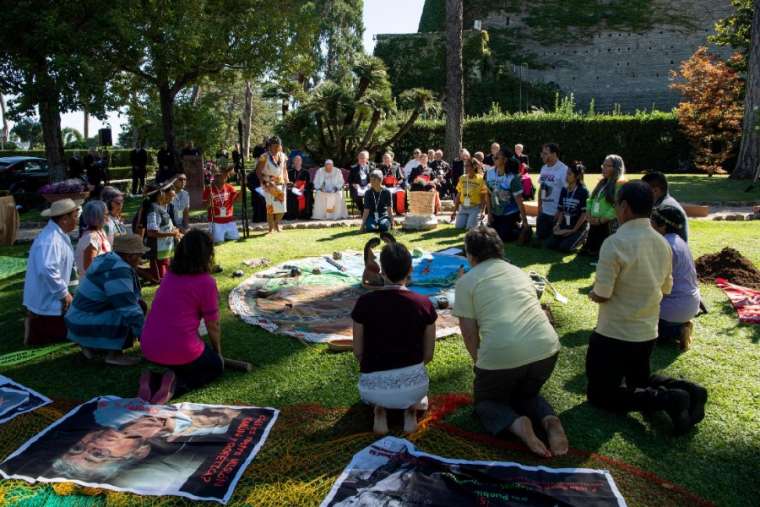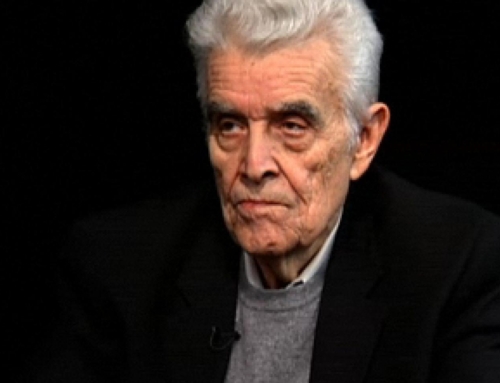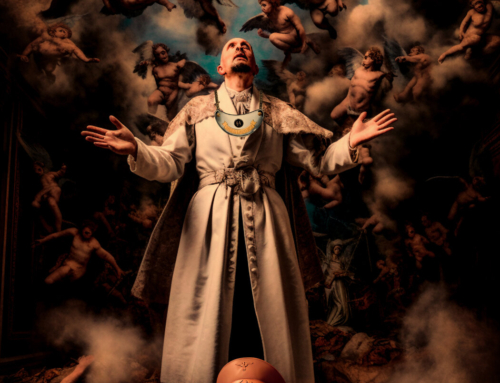We need to get our head around church history. We’ve been here before and too often it ended in tears.
I’m talking about misguided Jesuit approaches to missionary work. Here’s the history. During the second wave of the Counter Reformation in the first half of the seventeenth century, the French Catholic church came under the influence of the Jesuit religious order which put in place very popular methods of evangelization efforts. The Jesuit strategy was enormously successful in these years, but in the minds of many devout Catholics, Jesuit success came at the expense of key doctrines and devotions of the church. To evangelize, the Jesuits believed it was necessary to adapt the gospel to the culture and to use whatever means necessary to make it palatable and acceptable to people who were biased against the church and the Christian gospel.
Following their founder, St Ignatius, the Jesuits taught that sin was the result of a lapse in mental discipline. If you strove harder to control your thoughts you would not sin so much. Their critics said this downplayed the seriousness of sin and subjectivized it making it no more than a kind of wrong headedness. The Jesuit approach was hugely popular because in other ways they also sought to make the faith more acceptable. In their approach to evangelization their critics accused them of watering down the doctrines of the faith, turning a blind eye to sin and having so much compassion for the sinner that they neglected to call them to repentance and faith.
This adaptability and flexibility can be seen in Jesuit evangelization today. Fr James Martin SJ avoids any controversy with his huge following by rarely mentioning any aspect of Catholic theology and practice which might put people off. Pope Francis has been called a “Peronist” because he adapts his message and style to whomever he happens to be with. I wonder if this trait of adaptability and intentional ambiguity actually has more to do with his Jesuit formation than his links with the methods of Peron.
Such flexibility and adaptability has strengths. In our fast changing mobile and globalized world the Catholic faith has to adapt and flex to a certain amount. The challenges facing the church in this century are laid out pretty clearly in my podcast analysis of John Allen’s The Future Church. I encourage you to listen to it. Go here. However the adaptability and flexibility always has to be reined in and anchored by the unchanging tenets of the faith. A strong and clear central authority has always been the rock from which the faith has been defined and defended.
Historically, the Jesuits have been at the cutting edge of this inculturation method of evangelization–with both its strengths and its weaknesses.
In China the Jesuit missionaries followed their pattern of seeking to inculturate the Christian faith. This theory of evangelization had been tried and tested. It is simple: the missionary seeks to find connecting points between the existing religion and culture and weave the presentation of the Christian gospel into that existing anchor point. While this is good in theory, the risk is that the Christian beliefs become compromised. Instead of simply find a connecting point, the pagan devotions and religion infect Christianity. The result is a form of syncretism in which the uniqueness of the Christian gospel is swallowed up in a multi faith mish mash.
The evangelization the inculturation method led to the Chinese Rites controversy The Jesuits thought Chinese ancestor worship and other Confucian ceremonies were permissible and complementary to the Catholic faith. The Franciscan and Dominican missionaries disagreed and referred it to Rome. Rome eventually ruled against the practice although Pope Pius XII in 1939 reviewed the situation and gave limited approval to the Chinese ethnic practices being included in the practice of the faith.
As the faith continues to go global, this same controversy echoes down to our own age. How much can the Catholic faith be adapted and flexible? How much of the native religions and cultural practices be adopted and adapted?
In India, for example, it would seem that a disturbing number of the Catholic hierarchy, theologians and clergy have adopted a kind of Hindu-Catholicism. Church Militant reports on the disturbing trend here. Another problem with the slide into syncretism is that it treats all religions as equal in value. The old interfaith mantra is, “We’re all climbing the same mountain but by different paths.” A further problem is that some religions are deeply pagan and explicitly demonic. Therefore when Catholicism is mixed up with them it is a disaster. The cult of Santa Muerte in Mexico, Voodoo in Haiti and Santeria in Cuba are all examples of inculturation gone wrong big time.
Usually the inculturation is done sincerely, but naively. I can remember a story from a missionary friend in Papua New Guinea. He said the missionaries were looking at ways to connect with the local culture and they saw that the people would beat drums made from hollowed out logs to summon the people. So the missionary said, “I know! That’s like bells in Christian churches! Let’s get them to bang the drums as everyone is coming to Mass.”
So they set the men banging the drums, but the Christian men were reluctant to comply. The missionary asked why and the indigenous men were bewildered. “Why would you want us to beat the drums? We did this before we were baptized and met the Lord Jesus. Then we would beat the drums to summon the demons from the jungle so they could possess us in our ceremonies.”
You get the idea. What many of the modernist progressive “missionaries” are seeking to do is all very sincere but also very naive. They don’t actually believe in demons and the supernatural realm and they suffer from a kind of Western colonialist guilt and think they mustn’t “impose” Christianity on anyone. But they don’t seem to realize that many of the indigenous religions–while seemingly harmless in many ways–are also linked with the worship of demonic spirits. The gospel needs to be shared compassionately and sensitively without imposing a religion on anyone, but sometimes St Boniface needs to hack down the sacred tree–not worship it.
Why did they allow an indigenous tree ceremony at the Vatican yesterday? I’m not sure, nor am I sure what the content of the ceremony actually was. I don’t know how Catholic it was or if it was purely from an indigenous culture. I can’t pass judgement on it because I don’t have enough information.
However, I was relieved that Pope Francis at least seemed to remain neutral about the ceremony and simply chose to end his audience by leading everyone in the Lord’s Prayer. Was he neutral about it? We can’t really say because we don’t know his true feelings or the true content of the ceremony.
What we can say is that the whole thing was an other example of the prevailing ambiguity and open ended ness in this pontificate which is bewildering to so many and serving to cloud issues where we need clarity. It is therefore a pretty good example of the Jesuititcal tactic of compromise and “inculturation” this post was attempting to uncover and explain.







Leave A Comment
You must be logged in to post a comment.